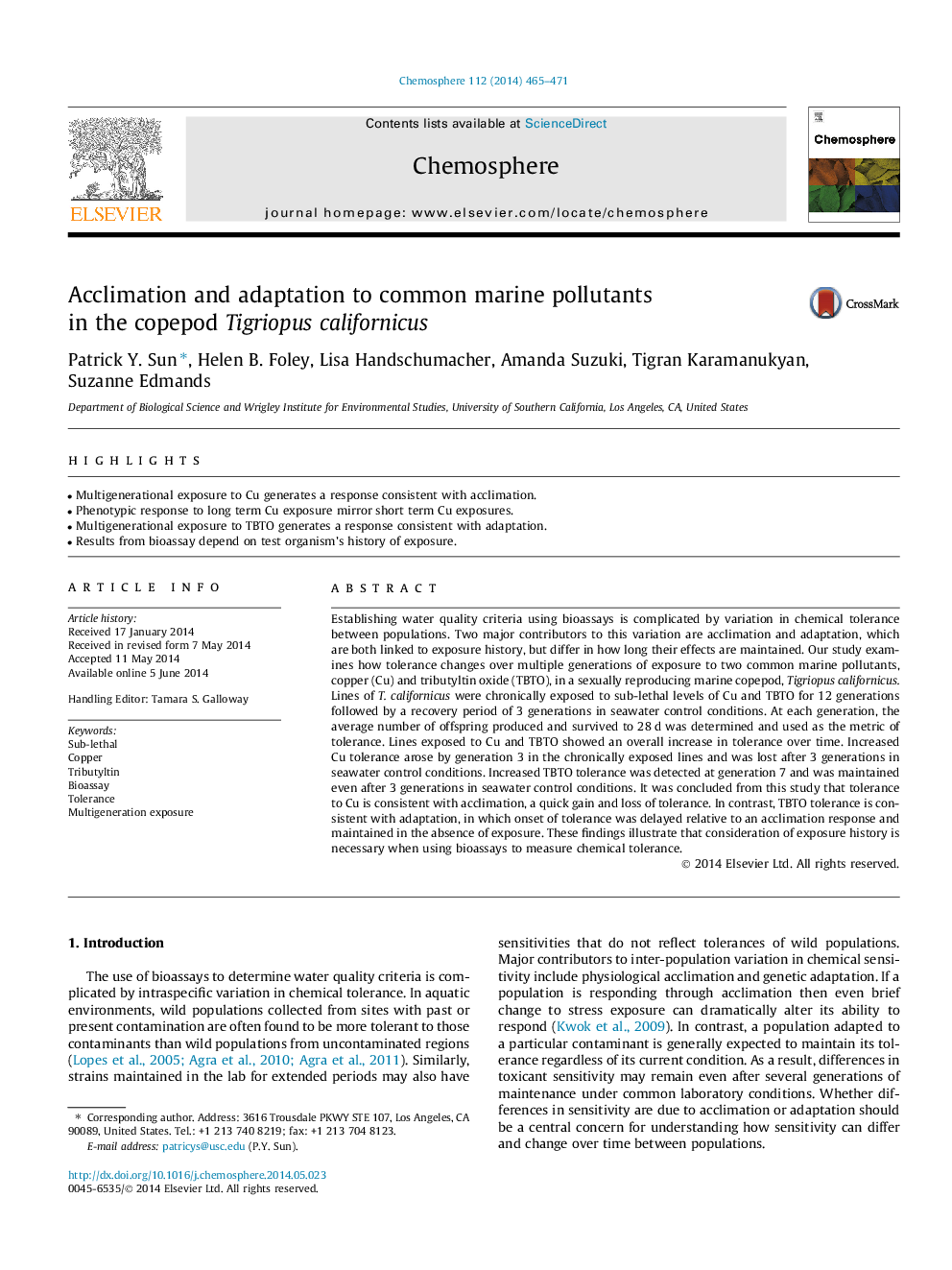| کد مقاله | کد نشریه | سال انتشار | مقاله انگلیسی | نسخه تمام متن |
|---|---|---|---|---|
| 6308883 | 1618859 | 2014 | 7 صفحه PDF | دانلود رایگان |

- Multigenerational exposure to Cu generates a response consistent with acclimation.
- Phenotypic response to long term Cu exposure mirror short term Cu exposures.
- Multigenerational exposure to TBTO generates a response consistent with adaptation.
- Results from bioassay depend on test organism's history of exposure.
Establishing water quality criteria using bioassays is complicated by variation in chemical tolerance between populations. Two major contributors to this variation are acclimation and adaptation, which are both linked to exposure history, but differ in how long their effects are maintained. Our study examines how tolerance changes over multiple generations of exposure to two common marine pollutants, copper (Cu) and tributyltin oxide (TBTO), in a sexually reproducing marine copepod, Tigriopus californicus. Lines of T. californicus were chronically exposed to sub-lethal levels of Cu and TBTO for 12 generations followed by a recovery period of 3 generations in seawater control conditions. At each generation, the average number of offspring produced and survived to 28Â d was determined and used as the metric of tolerance. Lines exposed to Cu and TBTO showed an overall increase in tolerance over time. Increased Cu tolerance arose by generation 3 in the chronically exposed lines and was lost after 3 generations in seawater control conditions. Increased TBTO tolerance was detected at generation 7 and was maintained even after 3 generations in seawater control conditions. It was concluded from this study that tolerance to Cu is consistent with acclimation, a quick gain and loss of tolerance. In contrast, TBTO tolerance is consistent with adaptation, in which onset of tolerance was delayed relative to an acclimation response and maintained in the absence of exposure. These findings illustrate that consideration of exposure history is necessary when using bioassays to measure chemical tolerance.
Journal: Chemosphere - Volume 112, October 2014, Pages 465-471